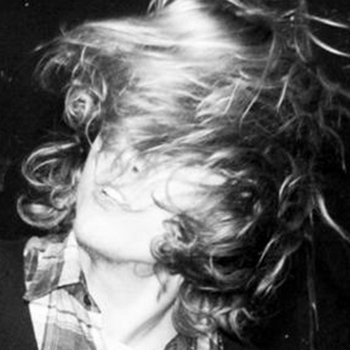 Photo by Denee Segall
Photo by Denee Segall
Were Ty Segall to start his entire career over again, he might not do it under the name Ty Segall.
It’s a bit late for that now, well over a decade since he emerged as the princeling of San Francisco’s garage rock revival. Back then, he was a college student in a city vibrating with the heady optimism of Obama’s first term, where you could still rent a house in the Mission with your friends and without being employed by Google. The goal was to be successful, not recognizable. Now, at least within the context of independent music, he is both. It has made him aware of recognition’s discontents, or at least how it can get in the way of being a regular person dealing with people in a regular way. And he is, he claims, a regular person in his mid-30s with a wife and daughter who just so happens to have a double-digit number of albums to his name.
That double-digit number, to be clear, doesn’t include the albums he’s made as part of the bands GØGGS and Fuzz, nor the albums he’s made as one-half of duos with Mikal Cronin and then White Fence’s Tim Presley. It would stay in the double digits even if you excluded his score for the 2020 documentary Whirlybird and his live albums and covers compilations, of which there are multiple. But if you know Ty Segall, you knew this already. His output is the stuff of legend. Dwelling solely on numbers is an oversimplification.








2 x Vinyl LP, Compact Disc (CD), Cassette




Segall isn’t particularly keen on interviews. He doesn’t enjoy talking about himself. He wants the music to speak for itself—and, yes, he knows that’s a cliché thing to say. He’s unfailingly polite, but with a reticence you might expect from someone who achieved a level of prominence early enough in life that he was still being characterized as a boy king and le kid de Laguna Beach well into his 30s. He tends to skirt personal subjects. He has no explanation for his fans’ full-throated admiration of his work, and will likely never reconcile his self-image with his public persona. “It’s like, ‘Thank you, that’s wild,” he says. “I’ll never be able to think of my music like that.’”
Segall left San Francisco and the scene that made him for Los Angeles 11 years ago. We sat down together on a wintery morning in Santa Monica, a place where “wintery” means blinding sunshine, and blustery wind whipping off the Pacific. Segall has lived on the West Side for the past six years, putting down permanent roots in the form of a three-room home studio complex outfitted with a Studer two-inch tape machine and, “some mics that I don’t think other studios have.” His latest album, Three Bells, and its stripped-down predecessor, 2022’s “Hello, Hi,” were both recorded on-site.
Coming from almost anyone else, Three Bells would be considered a solo record. But ‘solo record’ has long felt an ill-fitting—if not outright arbitrary—designation in the context of Segall’s career. He has a habit of assembling specific bands around individual projects and tours. For Emotional Mugger, he had the Muggers. Sleeper had the Sleeper Band. The Freedom Band—Mikal Cronin, Emmett Kelly, Charles Moothart, and Ben Boye—remained intact from 2017’s Ty Segall to the Three Bells sessions, and is dissolving now, as Moothart leaves to rehabilitate from a repetitive motion injury. Segall doesn’t believe in replacements: “I’m the kind of person that when someone leaves the group, the group is done.”
Unsurprisingly given the laundry list of longtime friends and collaborators that fill his liner notes, Segall can perhaps be approached more easily through his associations, several of whom extol his musical and personal virtues. Kelly says he has a “youthful wondrousness.” Friends since high school, Moothart initially found Segall somewhat intimidating, only to later discover that Segall felt the same way about him. “Even back then, he was one of the first people I knew who would talk about making records with a clarity that I’d never really heard anyone talk about it before,” Moothart recalls.






2 x Vinyl LP, Compact Disc (CD), Cassette




Ty Segall as described by Ty Segall, however, is somewhat insecure. That word keeps cropping up during our conversation. He’s insecure about being treated as special by his fans, and insecure about any self-promotion, particularly on social media. He’s insecure about how he tends to be a “pop-y, sugary songwriter on the guitar.” He’s insecure about his singing voice, and he dislikes his vocals on Sleeper. Toward the end of our conversation, he doubles back to a question about fatherhood, because he says he’s insecure about his answer.
According to his friends, he need not be so concerned. As Moothart sees it, the admiration Segall’s audience feels toward him makes sense: “He always had that magnetism.” No one describes him as a one-trick songwriting pony. If anything, Kelly says, he’s only grown more nuanced. And Presley rather likes his vocals: “He has such a strong voice. I’m always taken by that.” They describe his work ethic in uniformly superlative terms. When I ask Cronin if he has ever seen Segall experience writer’s block, he responds, “He’ll tell me he’s experiencing it, but compared to my own experience with writer’s block, I have not seen him get a significant case.” Osees’ John Dwyer, whose label Castle Face released Segall’s 2008 full-length debut, sees Segall’s influence everywhere. “He’s left a wake of impersonators behind him,” Dwyer says. “It’s always funny to travel the world and see bands that kind of sound like Ty from 10 years ago.”
Ty Segall, according to astrology, is a Gemini. He seems to agree. “I am a very, very dual-natured human,” he says. He fits the general description: creatively restless, not terribly self-serious, energetic, emotionally mutable, prone to move as fast as he can think. His reverence for rock ‘n’ roll manifests as an eagerness to continually remold it into an ever-expanding array of styles and subgenres. And, on occasion, to use it as a vehicle for perverse performance art on late night TV, the kind that ends with Stephen Colbert assuring the audience that Segall, who’s lying face-down on the studio floor, is okay.
This irreverence is not restricted to the stage. During the sessions for Emotional Mugger, Segall asked Kelly to come up with a country-style riff. “So I played the thing, and he was like, ‘That sounds cool, but can you use this pedal?’” remembers Kelly. “And he handed me a pedal that was, like, the most fucked-up sound imaginable.”
If writing about music is indeed as futile as dancing about architecture, then trying to capture the alchemy of collaborative songwriting must be the equivalent of going en pointe. I ask about it anyway. Segall has little taste for hired guns, and his collaborators are, by and large, his friends. Perhaps that’s why this alchemy requires so little extemporaneous conversation.
Discussing the process of writing Reverse Shark Attack together, Cronin remembers “a lot of nonverbal communication.” Their musical connection remains “deep” and “unspoken.” Moothart says that he and Segall move through ideas so quickly that “sometimes other people who were in the room were like, ‘What the fuck are you guys talking about?’” Presley and Segall sat down to collaborate shortly after a White Fence show in San Francisco and wrote “Time” from 2009’s Hair almost instantaneously and wholly reflexively. “When we write songs together, we don’t even need to talk about it,” says Presley. “Or if we do, it’s like two cavemen mumbling to each other.”


Both Presley and Segall paint. In recent years Presley has become known for enigmatic, flatly-rendered portraits and expressionistic, text-heavy figure drawings; his work recalls Modigliani, Leon Golub, and German Expressionists like Ernst Ludwig Kirchner and Karl Schmidt-Rottluff. He is, in Segall’s words, “a real painter.” Segall, by his own metric, is not. He regularly paints dogs, and tends to return to a visual motif he describes as “weird rainbow person.” Late last year, he made himself available for pet portrait commissions, and periodically sells paintings at the merch table. “It’s really cool that people enjoy my paintings,” he says, “I’m really blown away that people like them at all.”
When I ask Presley if he and Segall ever chat about that side of their creative practice, I get a firm “no.” He compares it to swapping stories about going to therapy: “Painting is such a personal thing. It’s a retreat from life, basically, and it’s so sacred that it’s hard to talk about,” says Presley. “Because what are you supposed to say? ‘Oh, what paints do you use?’”
Like everyone else who makes it to and beyond age 30, Ty Segall is confronting the ravages of age: bad backs, damaged eardrums, progressively debilitating hangovers, et cetera. He’s no longer the underage kid playing drums with a cast on in the basement of Dangerhouse Records, or sneaking into Hemlock Tavern to meet with John Dwyer. He has well outlived the prospect of being “the next Nirvana,” as Dwyer recalls his Castle Face co-founder Brian Lee Hughes once predicting. The rattling touring van has been exchanged for a proper tour bus; even the volume of the Freedom Band has fallen a few decibels to make shows, according to Kelly, “a little bit clearer, and less painful to be in the same room.”
Maybe this is where the metaphysical and the practical elements of Segall’s dual nature collide. “It used to be all about the feeling and the inherent nature of sound—moving people physically and in turn [moving] them spiritually or emotionally in this whole religious experience of volume, which is cool,” says Segall. “But it’s not sustainable. Now it’s more about dynamics and having fun. Maybe a notch less serious.”


Compact Disc (CD), Vinyl LP




“We’re all getting older, and we’ve just calmed down a little,” says Cronin. “Ty is a more precise and talented performer in a technical sense. Not that he wasn’t in the beginning too, but if you’re not diving into the crowd, you can nail a guitar solo a little harder.”
Three Bells is not exactly overloaded with solos, though they’re there, especially on “Move.” It’s also not a one-and-done, fuzzed-out, full-throttle, start-to-finish garage rock record at all. There’s a sense of Segall letting the air into his melodies and his production. Although “Eggman” ends in a cacophony of feedback, songs like “I Hear” and “To You” show their bones with sparser, ramshackle rhythms and atonal detours. In his own words, it’s “really weird.” There was, as you might guess, a brief moment of insecurity that was going to be “just too weird.”
For now, though, he loves it. “Honestly, I made this record for myself,” Segall says. “I was like, ‘I want to make something that I want to listen to.’” So he did. His concerns seem thus far unfounded, seeing as every format of the special edition release on Bandcamp sold out during pre-order. Sheer numbers aren’t everything, granted. But Segall seems to benefit when held up to a second opinion. Or five. Or hundreds.







